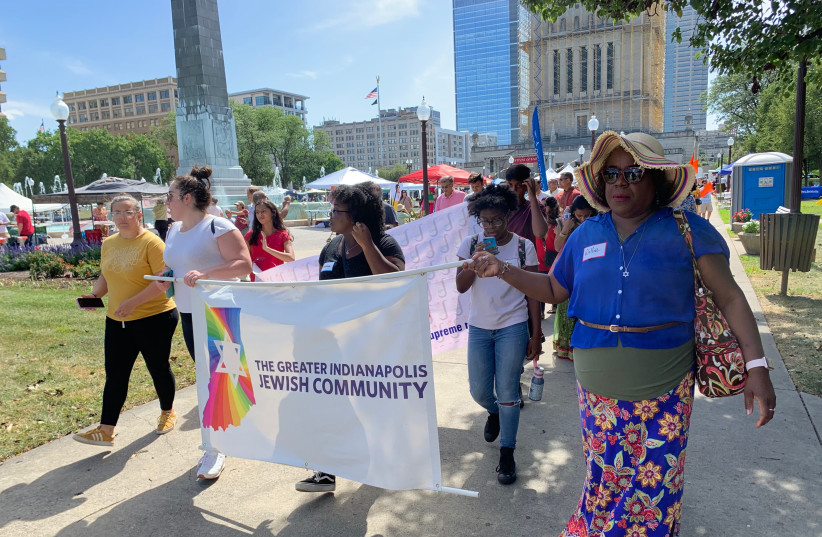In recent social justice crusading, a category of persecuted peoples has advanced: BIPOC (black, indigenous, people of color). Rooted in the study of post-colonialism, intersectionality, and more recently, Critical Race Theory (CRT), those calling to emancipate BIPOC do so in order to highlight a new class of persecuted individuals, whose rights must be protected and promoted. School curricula, the Hollywood industry, and media all call for more attention to be paid to BIPOC either through anti-racist educational training, more diversity hires, scripts with BIPOC characters, and so on.
Trailing not too far behind are Jewish activists and institutions in the United States, who proudly demonstrate that within the Jewish community, Jews of color (JOC) must also be highlighted. Progressive Zionists point to the diversity of Israel with the hope that this will convince Israel-haters to accept the Jewish state.
The “Jews of Color” classification came to my attention in the recent California struggle over educational malpractice in Ethnic Studies. In the original curriculum, known as the Ethnic Studies Model Curriculum (ESMC), Zionism is portrayed as a form of white supremacy, Jews in the United States usurp power because they are white, and students must learn to oppose apartheid Israel through support of the Boycott, Divestment and Sanctions (BDS) movement. Rightfully so, Jewish groups from the political left and the political right rang the alarm bell. The moment for Jewish unity was ripe. And then came the calls for strategy: what were the best ways to oppose the curriculum.
Many argued that the entire curriculum must be abolished, as it was so blatantly antisemitic. To that, many Jewish groups responded that this was unfeasible. Perennially afflicted with anxiety over optics, many Jewish groups maintained that opposing the entire curriculum would make Jews look radical and further alienate Jews from the mainstream. As they say, “two Jews, three opinions.” And so, while Jews battled over strategy, the curriculum inched its way to California Governor Gavin Newsom’s desk for approval.
Among the victorious solutions, spearheaded by some major Jewish organizations, was the proposal to insert a unit into the curriculum about Jews of color. The idea was simple: we must educate the population that Jews are not just white, but rather that there is an entire story of Jews from the Middle East and North Africa, all of whom are dark-skinned. If we could just show the world that we are not white – today’s avatar of the bogeyman – we would clarify mass misconceptions about Jews. The unit would highlight the story of Jews from the Middle East and in doing so, Jews would gain sympathy.

What the authors of this unit might not have considered is that in doing so, they would further entrench the idea that Jews from Europe, known as Ashkenazi, are white and that if there are Jews of color, then there must be white Jews. Indeed, if we look at the founders of the modern state of Israel, few come from the Middle East. Most were from Eastern Europe, thus reaffirming the stereotype that Israel is a European settler-colonial state. Be that as it may, what the authors may have also overlooked is that this type of framework divides Jews.
My father did not allow me to travel to Israel as a child and the first time I went to our homeland was as an adult. To this day, what I remember is the overwhelming feeling of awe and pride. Every which way I turned, I saw our people. I never thought that these here are Jews from the Middle East, those over there are Russian Jews, and over there French Jews. I saw Jews, the Jewish people, a beautiful tapestry, once again the majority in our ancestral land.
Masha Merkulova, the founder and executive director of Club Z, a rapidly growing Zionist youth movement, leads an activity with teens in which she asks, “Where are you from?” The teens often answer, “My parents are from Russia.” To that, Merkulova responds, “And where are their parents from and their parents?” Most teens shrug their shoulders. In doing this activity, Merkulova reclaims the Jewish narrative. Club Z’s tagline “Jews are from Judea,” though simple, is most astute in its observation that Jews, though scattered over the globe, all originate from the land of Israel.
To be fair, I understand well the desire to spearhead JOC initiatives: it emanates from the chambers of our history – the historical hope for acceptance. Accept us, we will be Frenchmen on the streets and Jews at home, we will recite Pushkin and Nekrasov better than our Russian fellowmen, we will drive to shul rather than walk and be seen as misfits, and so on.
The calls for initiatives within the American Jewish establishment to fund JOC projects and to sing the praises of the Jews of color pains me because it further divides our family. Jews are not a religion, they are not a race – we are a people with a joint history and; consequently, a common shared destiny.
The writer is director of education at Club Z.
